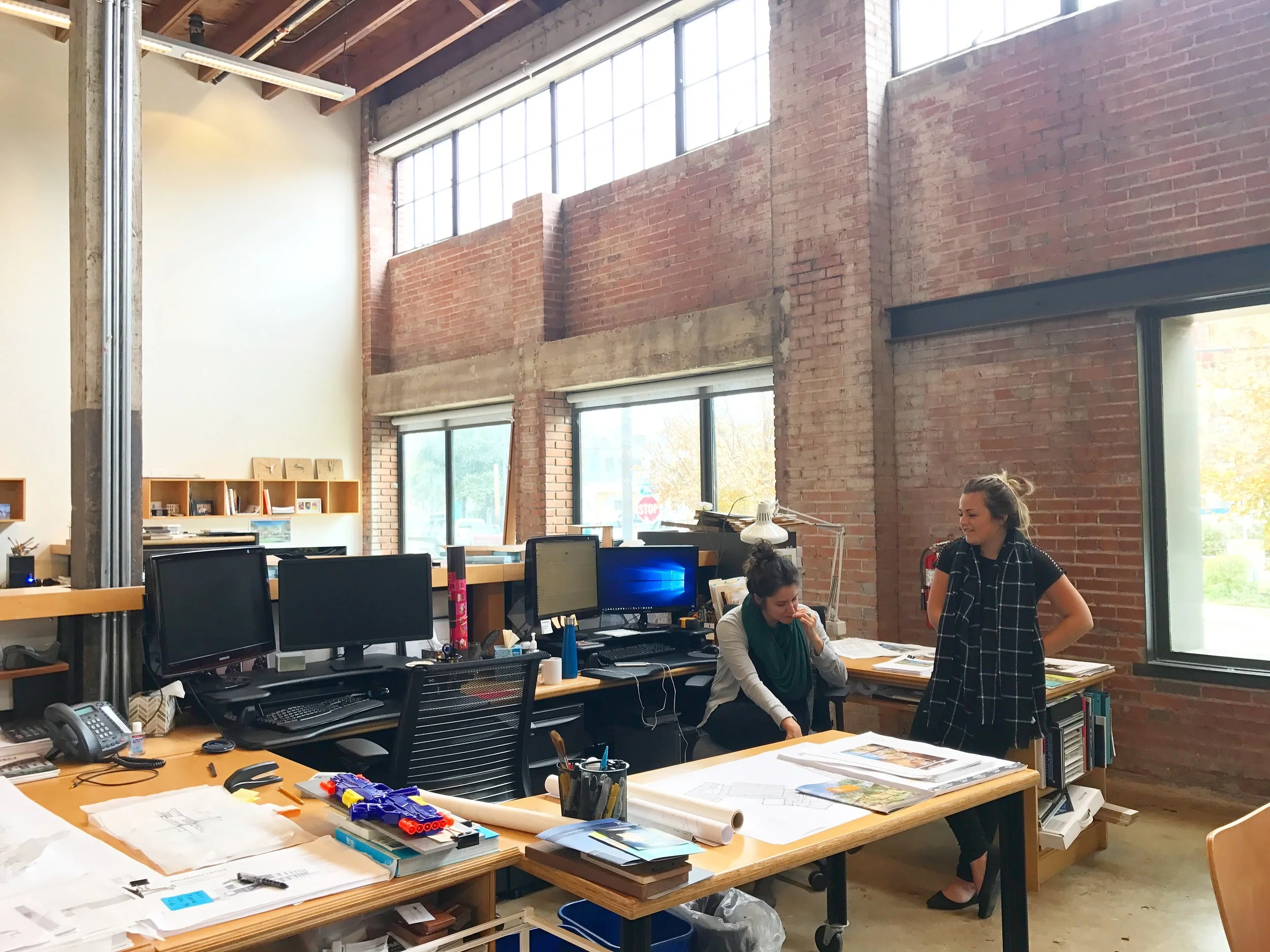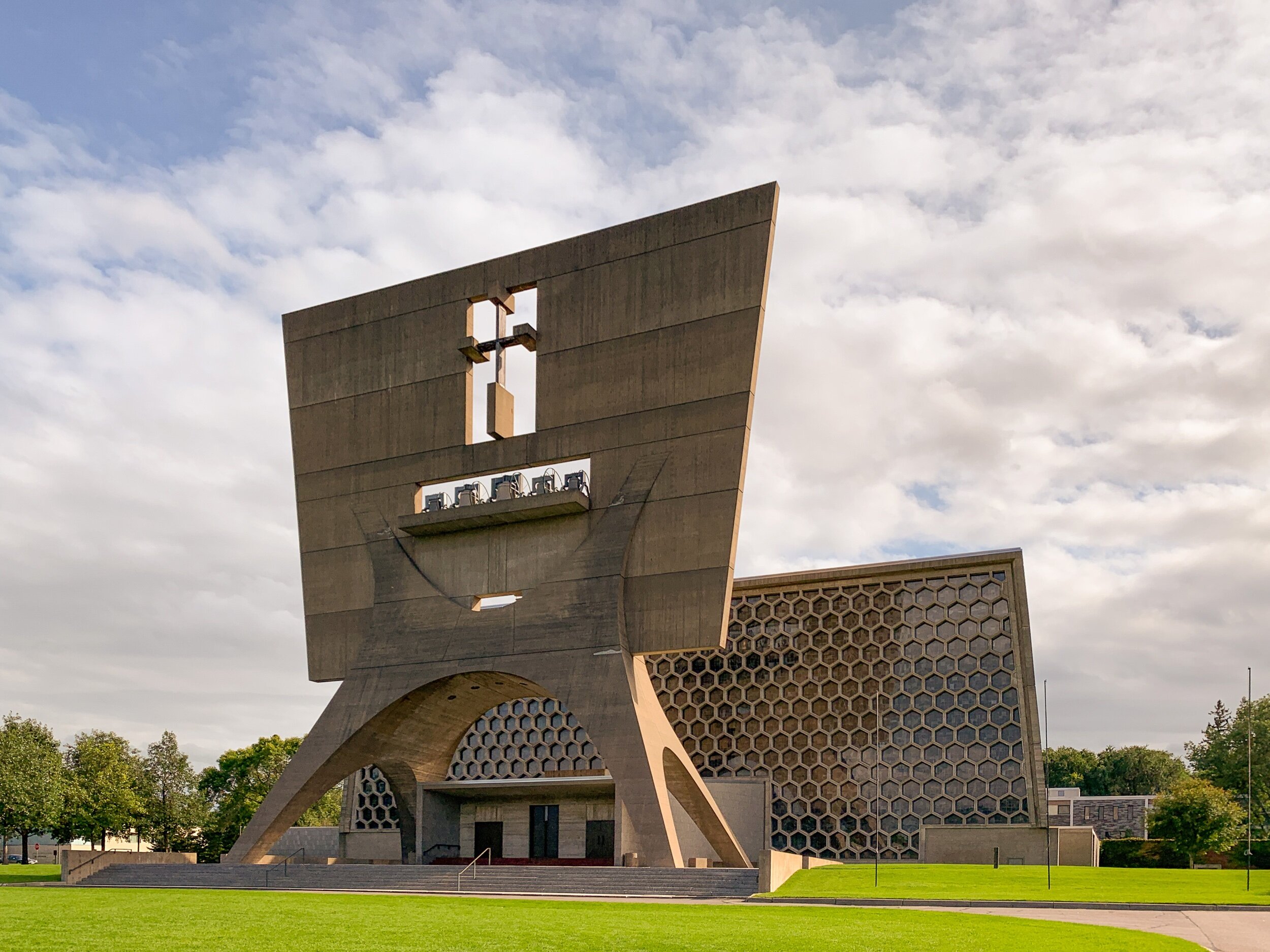Ellsworth Kelly: Austin

This past January, I had the opportunity to visit Ellsworth Kelly: Austin, a permanent installation at the Blanton Museum at the University of Texas as construction was drawing very near to a close.
Lighting designers from ARUP were on site to balance the illumination of the interior space and the totem at different times of day (the process is fascinating to observe). Austin as a space is transcendental. Kelly's work blurs the boundary between art and architecture, occupiable installation and built form. The chapel both houses art pieces in marble and wood, and is itself a masterful work of form and light.
Kelly's most famous medium in the mid-century was paint on canvas - minimal blocks of primary colors, of black and white (note - check out this book for an incredible retrospective wealth of EK's work). He later moved into three dimensions, exploring similar themes in large scale sculptural pieces. Many appear as larger than life, graceful forms that are simple and monolithic against the landscape (parks, college campuses, museums, etc.) - often times as a metal sculpture that is only one solid color (white, black, red), as if to highlight the contrast between it and it's natural setting. The effect makes these sculptures appear almost as as flattened against the landscape; a deletion of pure form from the landscape, or the pure form super-imposed over a more complex background.
Austin unites the different facets of Kelly's work - the two dimensional, the three dimensional in not one, but two ways - as an observable form you can walk around, and as an occupied, spatial work of art - and ultimately the fourth dimension - time and it's effects and constant changes.
Austin has a cruciform shape with two barrel vaults intersecting at it's apse, perfectly aligned on UT's campus with the Capitol building. The exterior is clad in a Portuguese stone. It's natural veining and variations are beautiful when viewed up close; however, the chapel appears smooth and flat when viewed from afar, with 1/16th of an installation tolerance. Stained glass from Munich forms large scale window installations out of Kelly's famous tumbling block paintings at three of the four chapel walls. The interior is white and seamless - a perfectly smooth background for the art inside. Italian marble, from quarries used by Michelangelo, create 12 panels that abstract the Stations of the Cross - minimal black and white compositions that appear silky and more vibrant and deep than painting when rendered in the smooth satin of the stone. A large wooden Totem is installed at the apse, rising gracefully some 20+ feet within the space. The Totem is redwood and created out of one solid piece of wood, growing in width as it curves up to the ceiling.
The three stained glass windows may be the most exciting part of Austin, activating the space and elevating the work beyond being a simple building with art pieces. Walking into Austin is like walking into a painting - the walls and floor are awash in vibrant, shimmering color where the light hits. The stained glass is handblown, and is therefore imperfect - the resulting splashes of color are slightly wavy and soft at the edges. As the sun moves across the sky throughout the day, the quality of light changes in intensity, and the colors shift and move within the space. The light is painterly. It is mesmerizing; intoxicating and humbling to experience. As a viewer, you are a part of the piece, occupying, activating, and participating with the play of light and color.
Austin is a masterful work of art that works at so many different levels. The chapel's form is rendered flat and monolithic on the UT campus by the smoothness of the stone - it is a sculpture itself. The redwood Totem inverts the typical relationship that Kelly used in his previous Totem pieces - it is a natural element placed within the extreme white and flatness of the chapel's interior. The materiality of the marble panels is satiny and perfect and beyond mere stone. The windows are a four dimensional painting, and need to be experienced to be fully understood.
I need to make a concerted effort to revisit EK: Austin as it is now complete and open to the public. A full day, sunrise to sunset, in each season would be a unique study in how the quality of light changes the space and the occupant's experience within Austin. Perhaps a 360 degree panorama time-lapse video would be an interesting medium to capture this.
Note 1: Much fanfare and praise has been given to this final, masterwork of Kelly's - and it is much deserved. Some of my favorite articles are: ArtNet, New York Times, Vanity Fair, Texas Monthly, Architectural Digest, and the Houston Chronicle.
Note 2: Much of the publication around EK: Austin's origin story did not accurately or comprehensively address how the work came to the University of Texas. This Houston Chronicle article does a good job of outlining the extensive and intensive effort of the team (including the inimitable art dealer Hiram Butler, and Overland) and many moving pieces that came together to bring the project into fruition.




